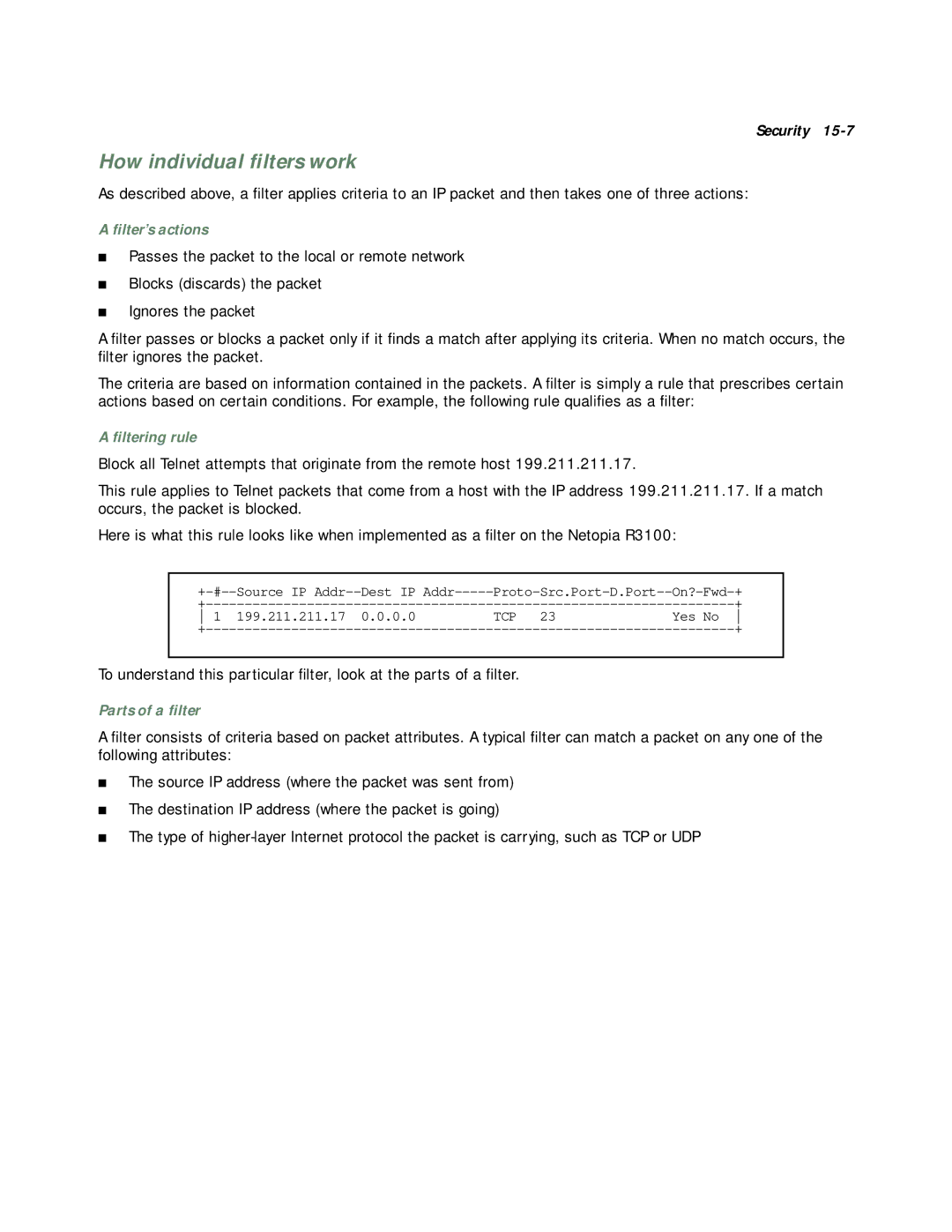
Security 15-7
How individual filters work
As described above, a filter applies criteria to an IP packet and then takes one of three actions:
A filter’s actions
■Passes the packet to the local or remote network
■Blocks (discards) the packet
■Ignores the packet
A filter passes or blocks a packet only if it finds a match after applying its criteria. When no match occurs, the filter ignores the packet.
The criteria are based on information contained in the packets. A filter is simply a rule that prescribes certain actions based on certain conditions. For example, the following rule qualifies as a filter:
A filtering rule
Block all Telnet attempts that originate from the remote host 199.211.211.17.
This rule applies to Telnet packets that come from a host with the IP address 199.211.211.17. If a match occurs, the packet is blocked.
Here is what this rule looks like when implemented as a filter on the Netopia R3100:
Source IP | Dest IP | |||
|
| + | ||
1 | 199.211.211.17 | 0.0.0.0 | TCP 23 | Yes No |
|
| + | ||
To understand this particular filter, look at the parts of a filter.
Parts of a filter
A filter consists of criteria based on packet attributes. A typical filter can match a packet on any one of the following attributes:
■The source IP address (where the packet was sent from)
■The destination IP address (where the packet is going)
■The type of
